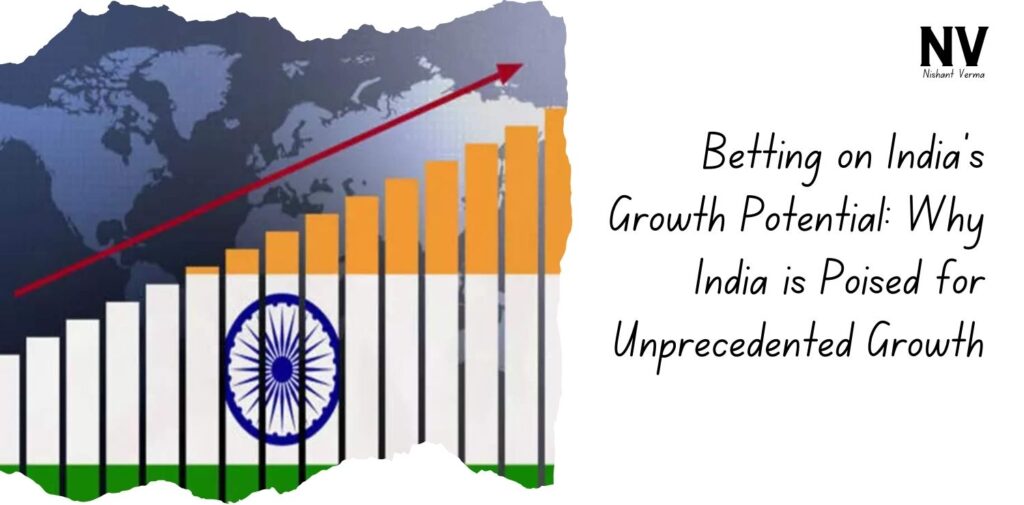India, the world’s most populous country, has been growing at a remarkable pace over the last few decades. While economic growth and development have been impressive, the reality is that a vast majority of Indians still do not have access to what are considered basic amenities or luxuries in more developed nations. This presents a massive opportunity for India Growth Potential, as millions of people are on the cusp of entering a new economic era.
Let’s consider some statistics that illustrate the current situation in India:
- Only 4% of Indians own a car.
- Only 6% of Indians have ever traveled abroad.
- Only 8% of Indians have air conditioning in their homes.
On the surface, these numbers may appear low. But, looking deeper, they reveal a story of untapped potential and future growth that makes India one of the most promising markets globally.
Car Ownership: A Rising Opportunity
With only 4% of Indians owning a car, vehicle penetration in India is among the lowest in the world. In contrast, the United States has a car ownership rate of over 80%, while European countries have similar high rates. This statistic is not a reflection of India’s lack of desire to own cars but rather economic constraints, infrastructural challenges, and limited credit availability for the middle and lower-middle classes.

However, the scenario is rapidly changing. With an increasing number of Indians rising to the middle class and improved access to affordable financing options, car ownership is expected to grow significantly in the coming years. Automobile companies are also adapting to the Indian market by launching compact, fuel-efficient, and affordable cars to cater to the aspirational Indian consumer.
In recent years, companies like Tata, Maruti Suzuki, and Hyundai have introduced a series of budget-friendly models, while electric vehicles are gaining traction with manufacturers like Ola Electric and Tata Motors investing heavily in this space. The growing preference for eco-friendly vehicles, coupled with government incentives, is likely to boost the market further.
International Travel: Tapping into Aspiration
Only 6% of Indians have traveled abroad. This is a strikingly low figure compared to countries like the United States or Germany, where a large percentage of the population has experienced international travel. For most Indians, traveling abroad remains a luxury due to high costs and visa-related complexities.
But here’s the silver lining: India’s burgeoning middle class, which is projected to grow to over 800 million by 2030, is showing an increasing inclination toward international travel. With disposable incomes on the rise and more budget-friendly options available, travel and tourism companies are betting big on Indians exploring foreign destinations. Furthermore, countries like Thailand, Malaysia, and Dubai are actively marketing themselves as affordable destinations for Indian travelers.
Air Conditioning: Entering the Comfort Zone
Air conditioning, a household luxury in India, is owned by only 8% of the population. Given that India is a country known for its extreme weather, this figure is surprisingly low. However, it’s not due to a lack of need but rather high initial costs and steep electricity bills, which have deterred many Indians from purchasing ACs.

The market for air conditioning is expected to witness exponential growth in the coming years as more Indians move to cities, earn higher salaries, and improve their living standards. Additionally, with innovations in energy-efficient technology and government regulations promoting the use of green appliances, the affordability and accessibility of ACs are likely to increase. Companies like Voltas, LG, and Samsung have been aggressively expanding their product ranges and offering easy finance options to attract more buyers.
Real Situation of India: The Path to Prosperity
Despite the low penetration rates of cars, international travel, and air conditioning, India’s economic indicators show signs of optimism. Here are a few factors that reflect India’s promising growth story:
- Rising Middle Class: India’s middle class is growing rapidly, and by 2030, it is expected to be one of the largest globally. This means that millions more Indians will have the financial capacity to buy cars, travel abroad, and enjoy luxuries like air conditioning.
- Urbanization: Currently, around 35% of India’s population lives in urban areas. As more people migrate to cities for better job prospects, there will be a corresponding increase in demand for housing, vehicles, consumer goods, and services.
- Infrastructure Development: The government’s focus on infrastructure development, such as the construction of highways, railways, and airports, is making travel more accessible and convenient, which will directly contribute to economic growth.
- Technological Advancements: India’s technology and digital transformation have made services like e-commerce, digital payments, and online learning accessible to millions of people, even in rural areas. This has paved the way for more people to improve their economic conditions and enter the consumer class.
Betting on India Growth Potential: Why Investors are Bullish
Global investors are optimistic about India’s growth potential. Companies across the globe are investing in Indian markets, infrastructure, and technology because they recognize the opportunity that lies in serving a population of over 1.4 billion people. The country’s young workforce, entrepreneurial spirit, and government reforms are contributing to a conducive business environment.

- Automobile Market: India is expected to become one of the largest car markets in the world in the next decade. With rising incomes and growing aspirations, car sales are likely to soar.
- Travel and Tourism: International and domestic tourism is poised for growth, with Indians increasingly spending on experiences. Travel agencies, airlines, and hospitality sectors are expanding to cater to this new wave of travelers.
- Consumer Durables: The air conditioning market, along with other consumer durables, is set to expand as more people seek to enhance their quality of life.
Conclusion: The Power of Untapped Potential
India’s growth story has only just begun. The low penetration rates of cars, international travel, and air conditioning highlight the enormous scope for improvement and investment. As more Indians move up the economic ladder and gain access to better opportunities, the demand for products and services will skyrocket.
Betting on India is not just about focusing on the numbers today—it’s about recognizing the potential for tomorrow. India is on the brink of transformation, and with the right investments in infrastructure, education, and technology, the country is poised to become an economic powerhouse, creating opportunities not just for its citizens but also for businesses and investors around the world.
By addressing current challenges and capitalizing on the enormous untapped potential, India’s growth story can turn into one of the most remarkable economic transformations in modern history.




